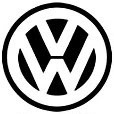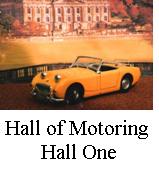
Volkswagen, literally means ‘Peoples car’. The VW company was founded from the ambitions of two totally different characters.
Adolph Hitler, a car enthusiast (who never learnt to drive) saw motor sport as a way of speeding up technology and was intent on having a car for the masses.
Dr. Ferdinand Porsche, shared the ambition of building a peoples car but, having no interest in politics, had little else in common with Hitler.
Hitler had heard of Porsche through his Auto-Union racing car designs and In May 1934 came the invitation (if that is the correct term) from Hitler for Porsche to submit proposals for the design of a ‘Peoples Car’. The first prototype was completed in 1936, in Porsche’s own garage. Vast mileage’s were covered with 3 prototypes and many problems were encountered. But Hitler was apparently satisfied and ordered the full backing of the project. Meanwhile Porsche did not limit his talents to the Volkswagen project and developed the V16 engined Auto Union race car. His war effort included designing the Tiger tank!
Hitler founded a company to manufacture the car and had a factory was built at Fallersleben, near Hanover in May 1938. Hitler also decreed a town was to be built for the workers, to be known as Kraft durch Fruede Stadt (Strength through Joy State). Hitler announced the new car would be called the KdF-Wagen, much to Porsche’s dismay, and that it would be financed by pre-payment available through a saving stamp scheme. Over 350,000 accounts were opened before the outbreak of war.
Despite Hitler’s choice of name for the car it was already becoming known as ‘The Beetle’. The plant, devastated by bombing, eventually passed to British control after the war and KdF Stadt was re-named Wolfsburg in May ’45 when a rebuilding programme began. Both the plant and the car were offered to other countries, but none showed interest. British Manufacturers turned it down with contempt! It was Pre-war and not what the public wanted, but the Germans said they are looking for a means of transport that will stand up and not fold up on the autobahns like some of your cars! Possibly the only person to see the potential was Major Ivan Hirst - The British Army Officer i/c. Under his command production resumed in August 1945 and 1,785 cars were built by the year end. The next year saw 10,000 cars built.
Claims cases on the Saving Stamp Scheme were heard for many years, some as late as 1960. Partial discounts were given on more than 120,000 cars.
In 1930 Porsche had set up his own design office in Stuttgart after gaining experience with Austro-Daimler, Steyr, Zundapp, and NSU, Porsche spent the war years in Stuttgart. Arrested by the Americans in 1945 and handed over to the French he was imprisoned for two years. But an Italian company Cisitalia paid the French authorities one million francs in return for Porsche designing the Cisitalia GP car, thereby securing his release in August 1947.
Total production went to 22,300,000+ placing it currently fourth in the all time best sellers list behind another VW, the Golf (25,000,000+), the Ford F series pick up (30,000,000+) and the first place Toyota Corolla (32,000,000+). However, One could argue that those vehicles went through major redesign phases and only the Beetle remained basically the same car throughout it's production life.



1/24th scale kit.
1/32nd scale kit Conv'.
Both built by Rod.
Rod built the 1/32nd scale Airfix kit back in the early 1960s. It is brush painted with Humbrol enamels and has dry transfer lettering for the "Polizei" wording. The Gunze Sangyo 1/24th scale kit was built in around the turn of this century. It benefits from modern techniques from Halfords car arcrylic paints for the finish to bare metal foil for the brightwork.
RETURN TO -
